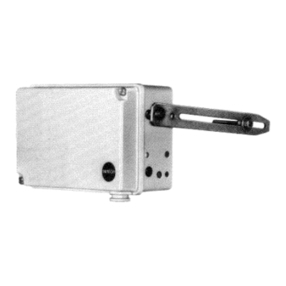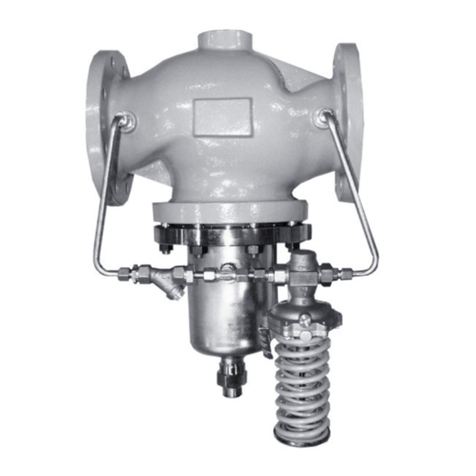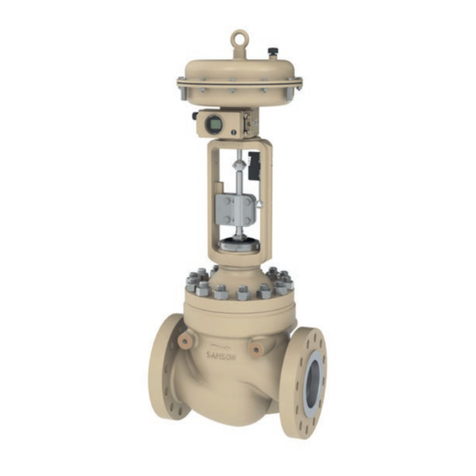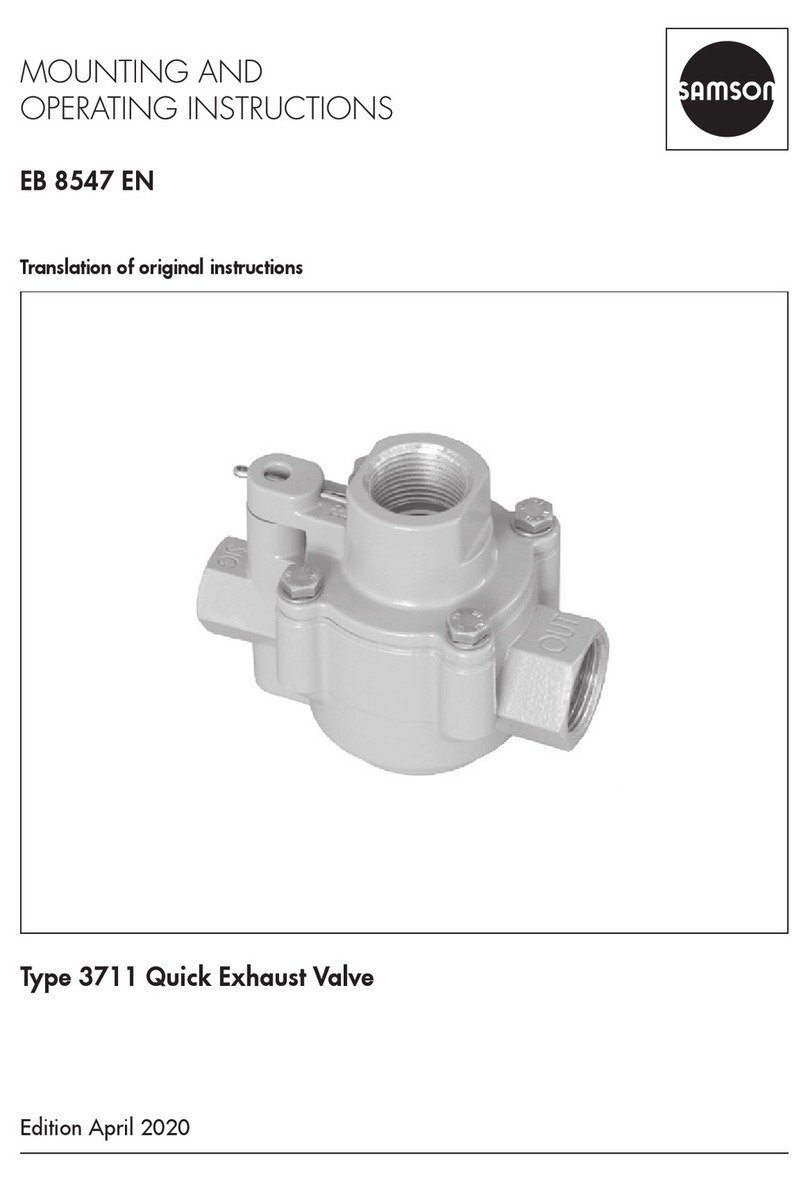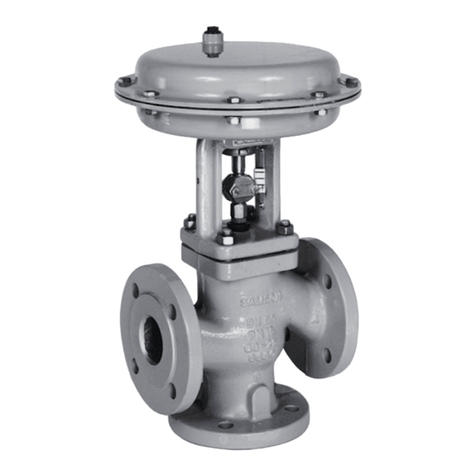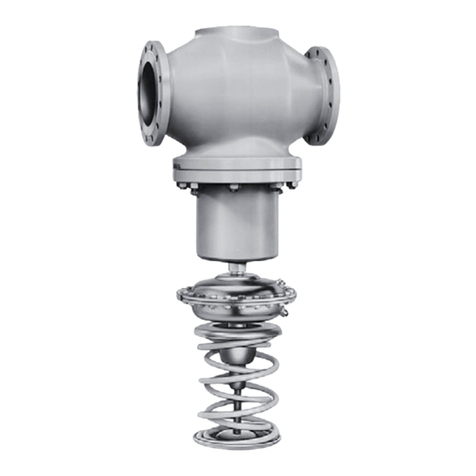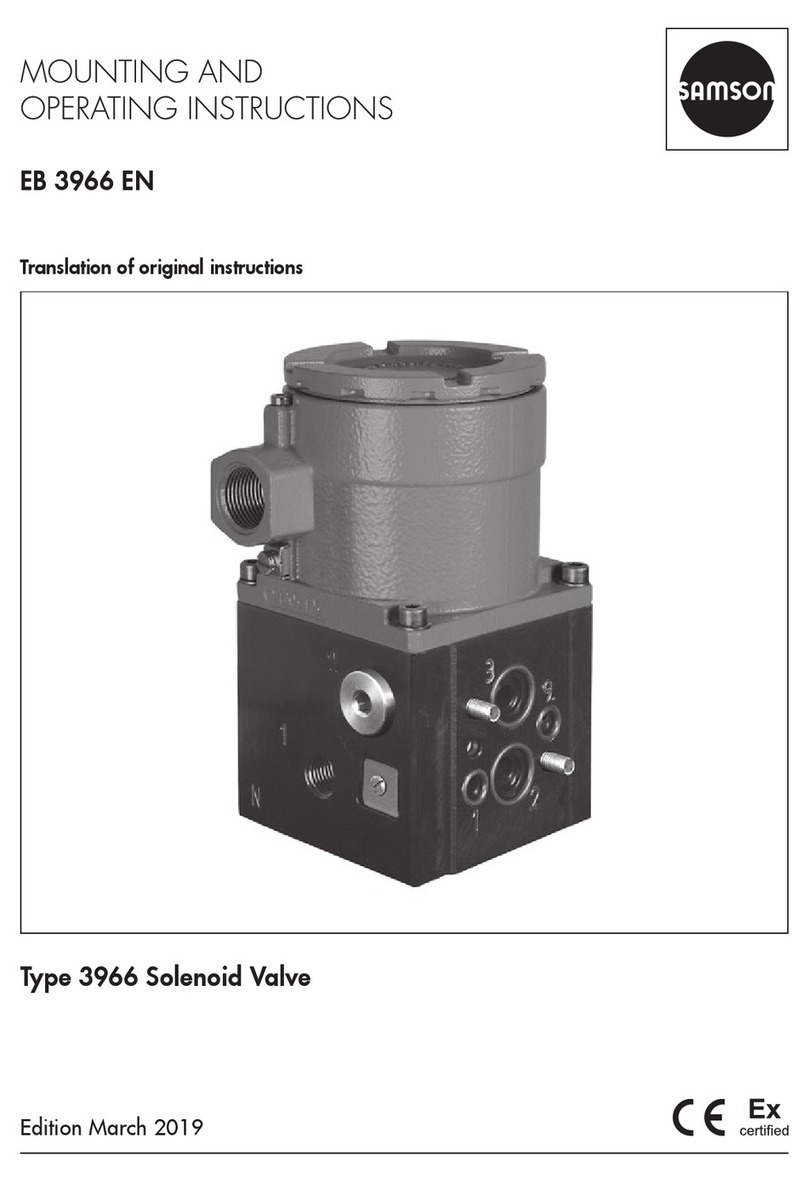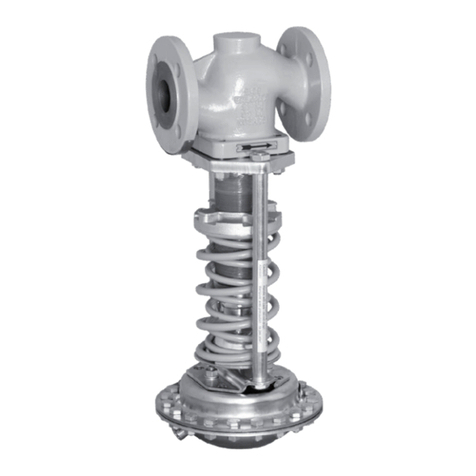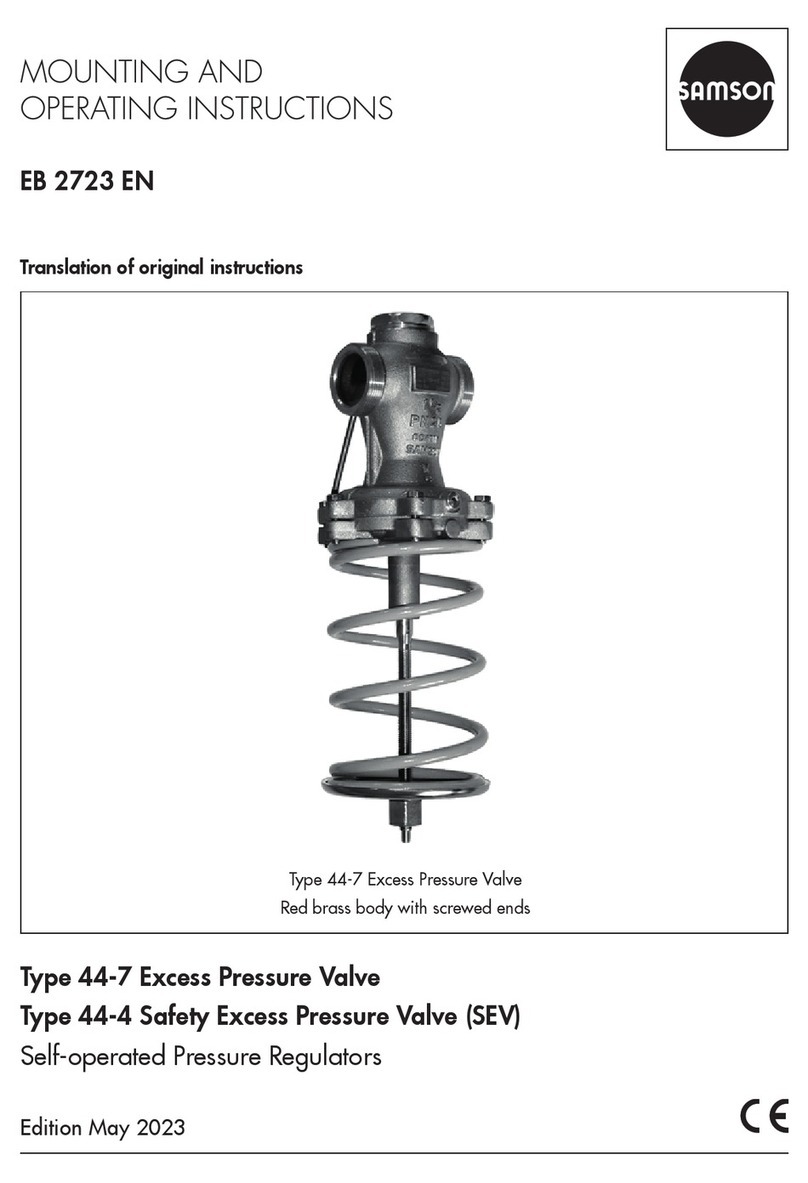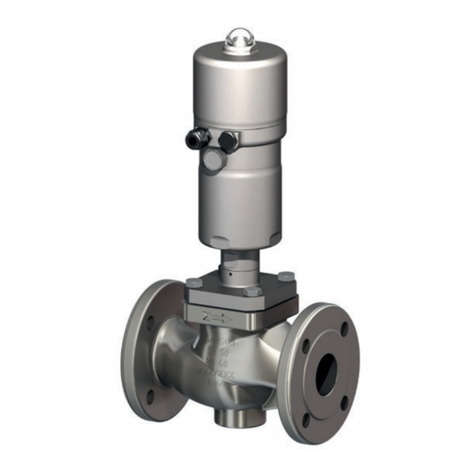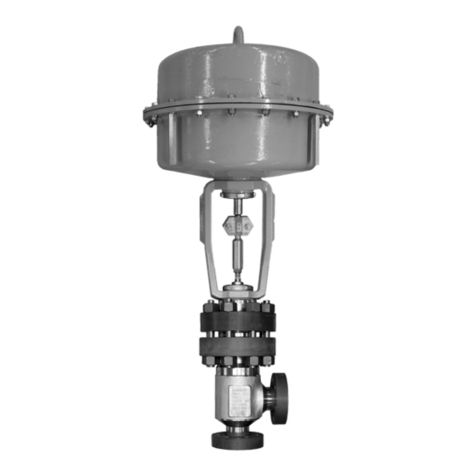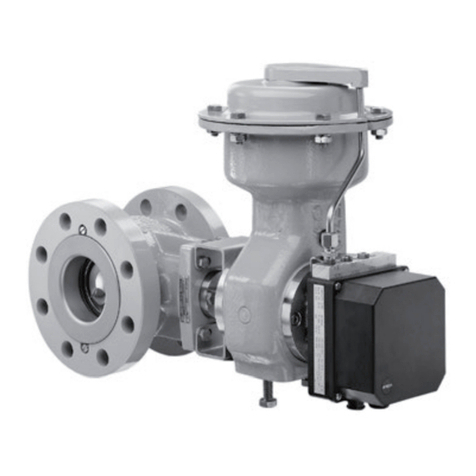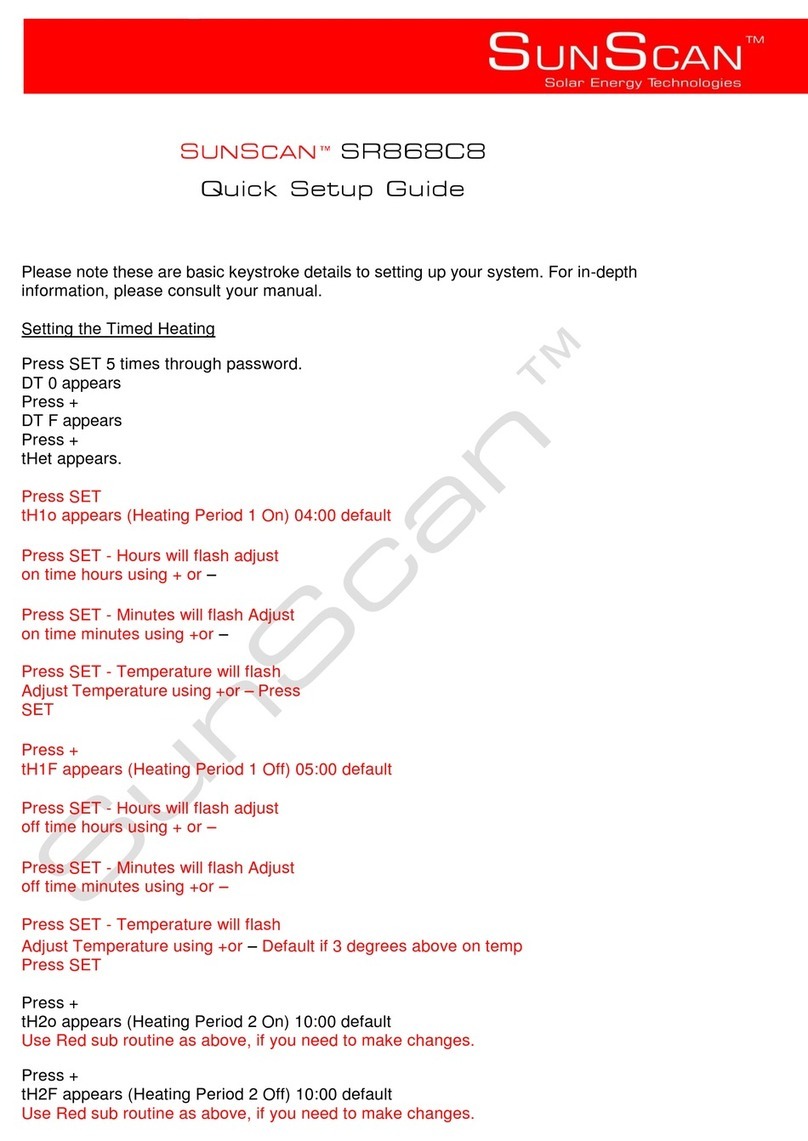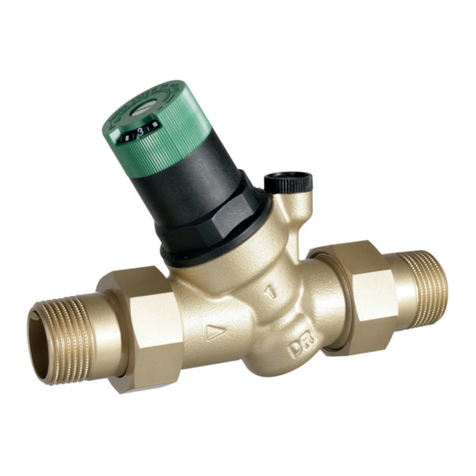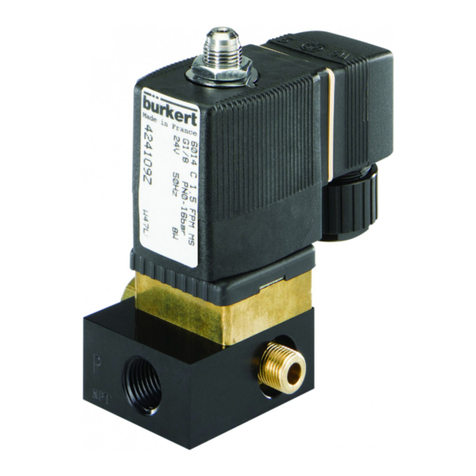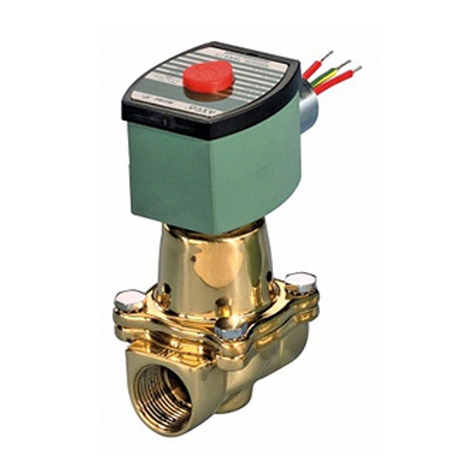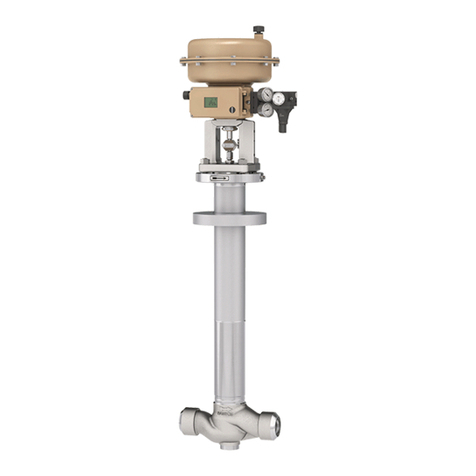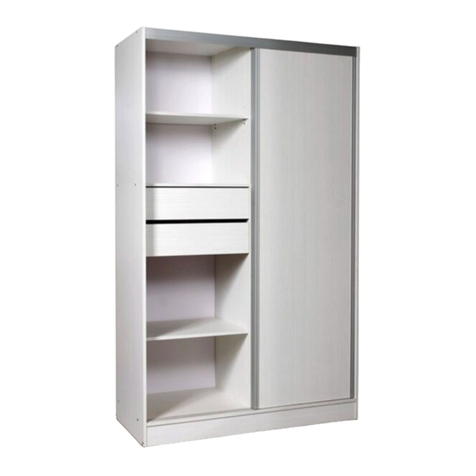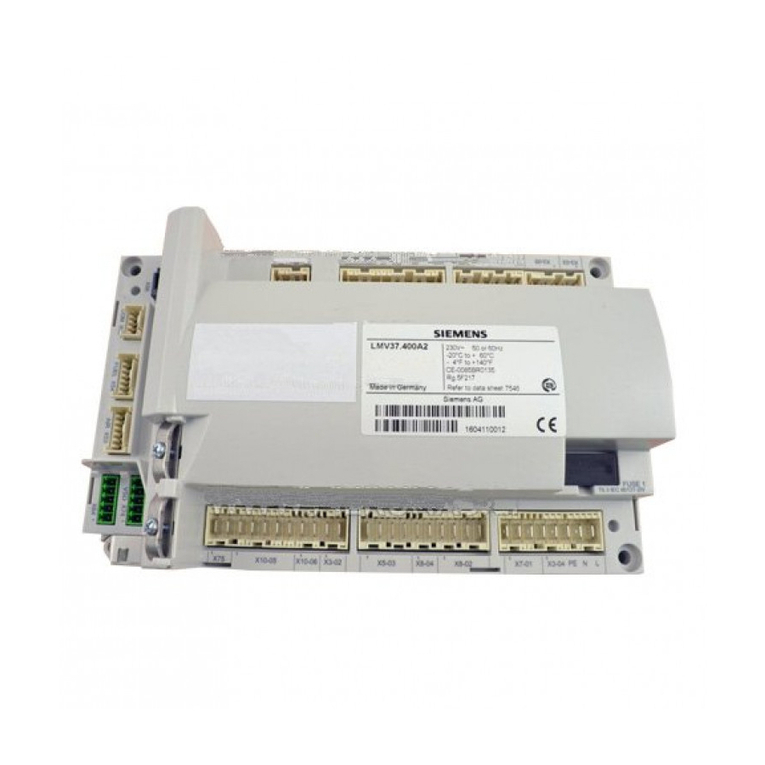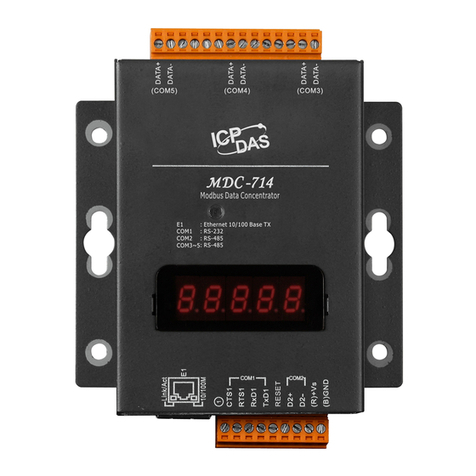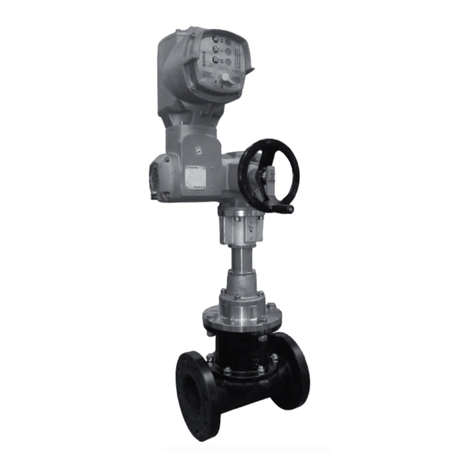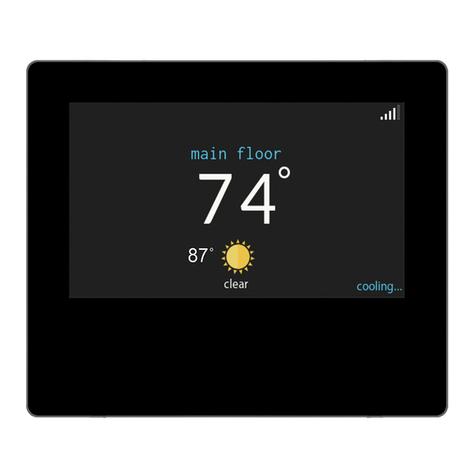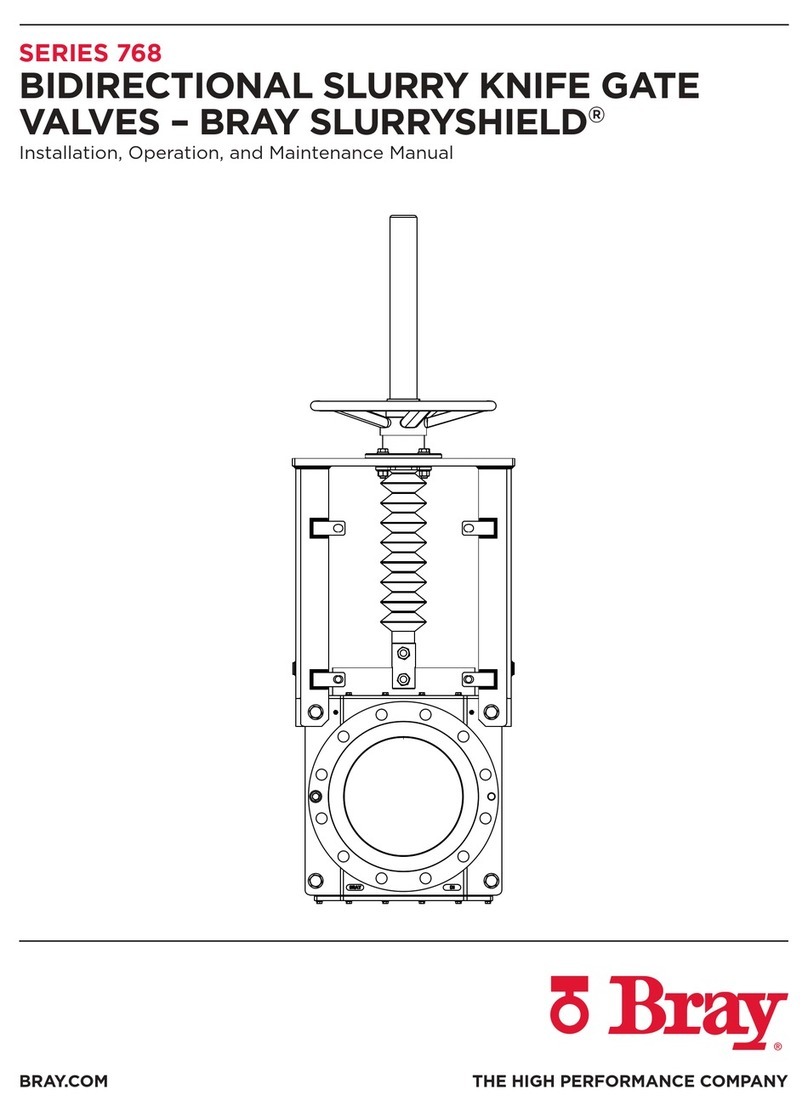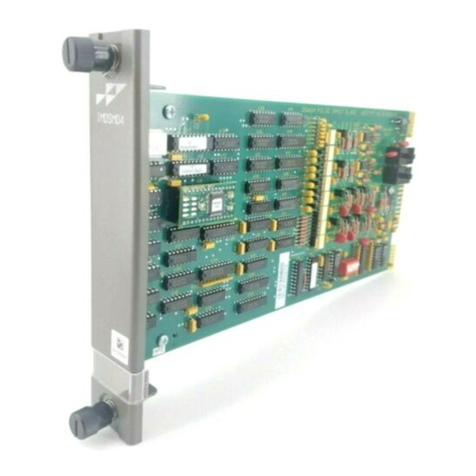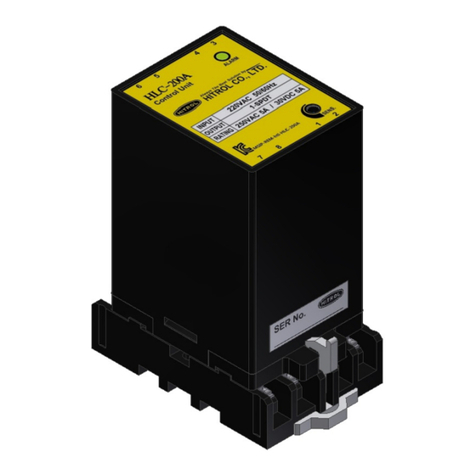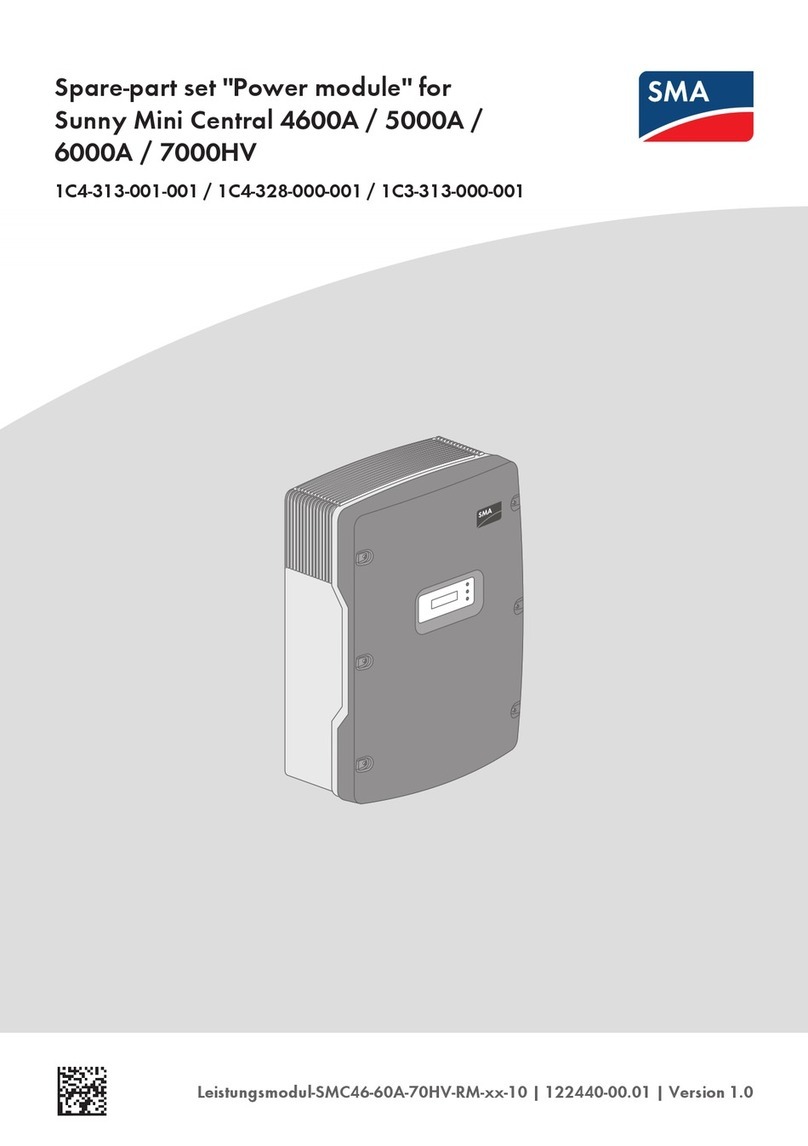
4 Maintenance – Replacing parts
The control valve is subject to wear espe-
cially at the seat, plug, and packing. De-
pending on the application conditions that
prevail, the valve must be inspected at ap-
propriately scheduled intervals to prevent
any problems before they occur.
If any leaks occur to the atmosphere, the
packing may have become untight.
If the valve does not seal properly, this may
be because tight shut-off is prevented by
dirt or other impurities between the seat
and plug or because the seating surfaces
have been damaged.
We recommend removing the parts, thor-
oughly cleaning them, and replacing them
with new parts, if necessary.
Caution!
If you intend carrying out mainten-
ance work on the valve, first relieve
the corresponding plant section of
pressure and, depending on the pro-
cess medium, drain it as well.
Let the plant section cool down to
reach ambient temperature, if
necessary.
Prior to starting any work, discon-
nect the electric or pneumatic con-
trol signal for the actuator. On pneu-
matic actuators, additionally remove
the signal pressure line.
As the process medium cannot drain
completely out of the valve, be
aware that some of the process me-
dium could still be in the valve.
We recommend that you remove the
valve from the pipeline.
Note!
The tightening torques and special tools re-
quired for installing and removing the seat
are listed in the table on page 8. For further
details, refer to the SAMSON Special Tools
WA 029 EN.
Important!
Always separate the actuator and the valve
prior to carrying out repairs! Separate the
actuator from the valve by removing the
stem connector clamps (7) and the nut (6).
Then lift the actuator off the valve. Note that
the rod nuts (8.3) of the rod-type yoke must
not be unscrewed under any circumstances.
4.1 Packing
1. Unscrew the nuts (1.1) and remove the
valve bonnet (5) and flange (5.1).
2. Check the gasket (1.2) in the valve
body for damage. We recommend that
you replace the gasket.
3. Screw off the threaded bushing (5.2)
and pull out the plug (3).
4. Pull out the damaged packing (4.2)
using an appropriate tool.
Remove the washer (4.3) and spring
(4.1) and clean the packing chamber.
5. Apply lubricant (order no. 8150-0111)
to the individual parts of the new pack-
ing and the plug stem. Insert the
plug (3) in the valve bonnet (5).
6. Place the valve bonnet with flange on
the valve body and secure with
nuts (1.1). Observe the tightening tor-
ques given in the table on page 8.
EB 8111/8112 EN 7
Maintenance – Replacing parts












